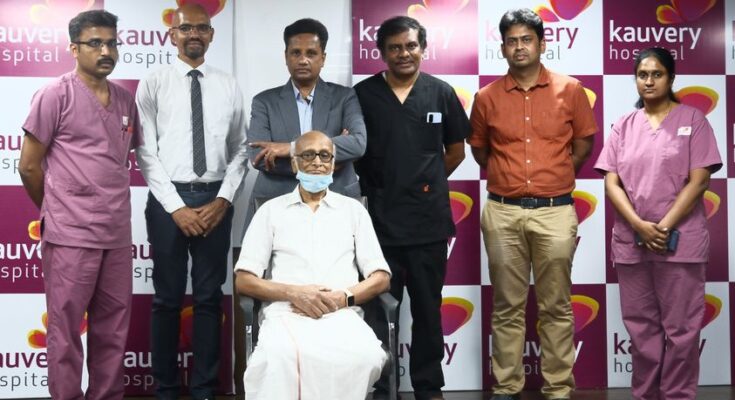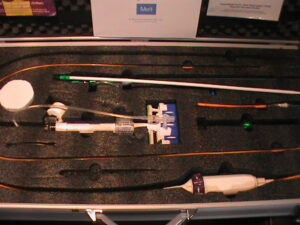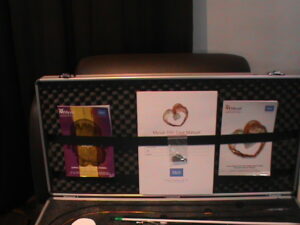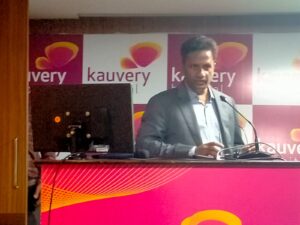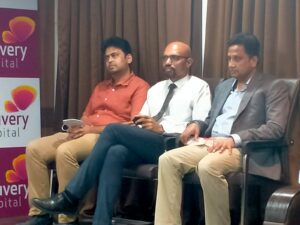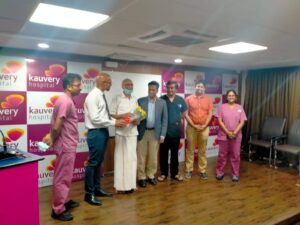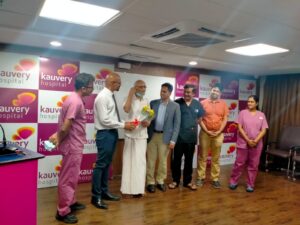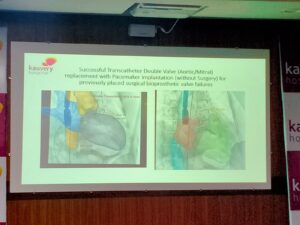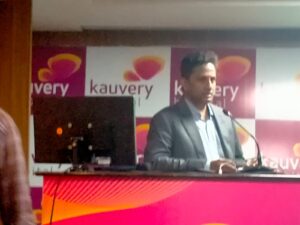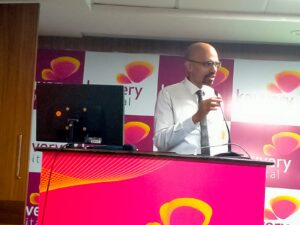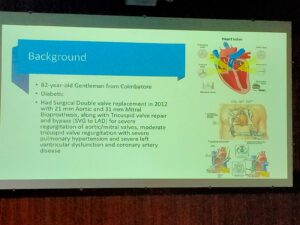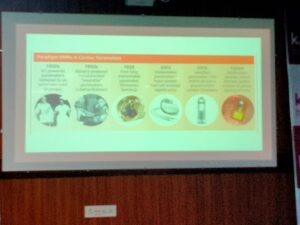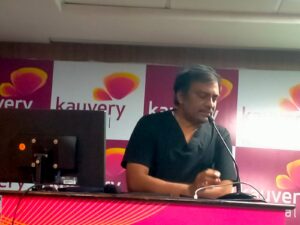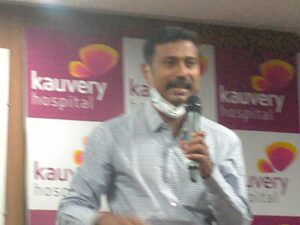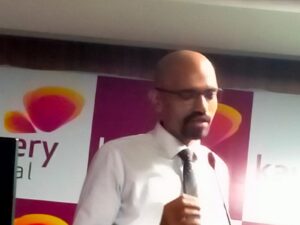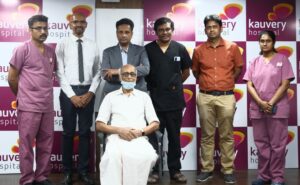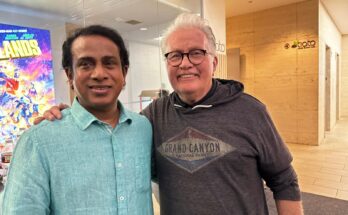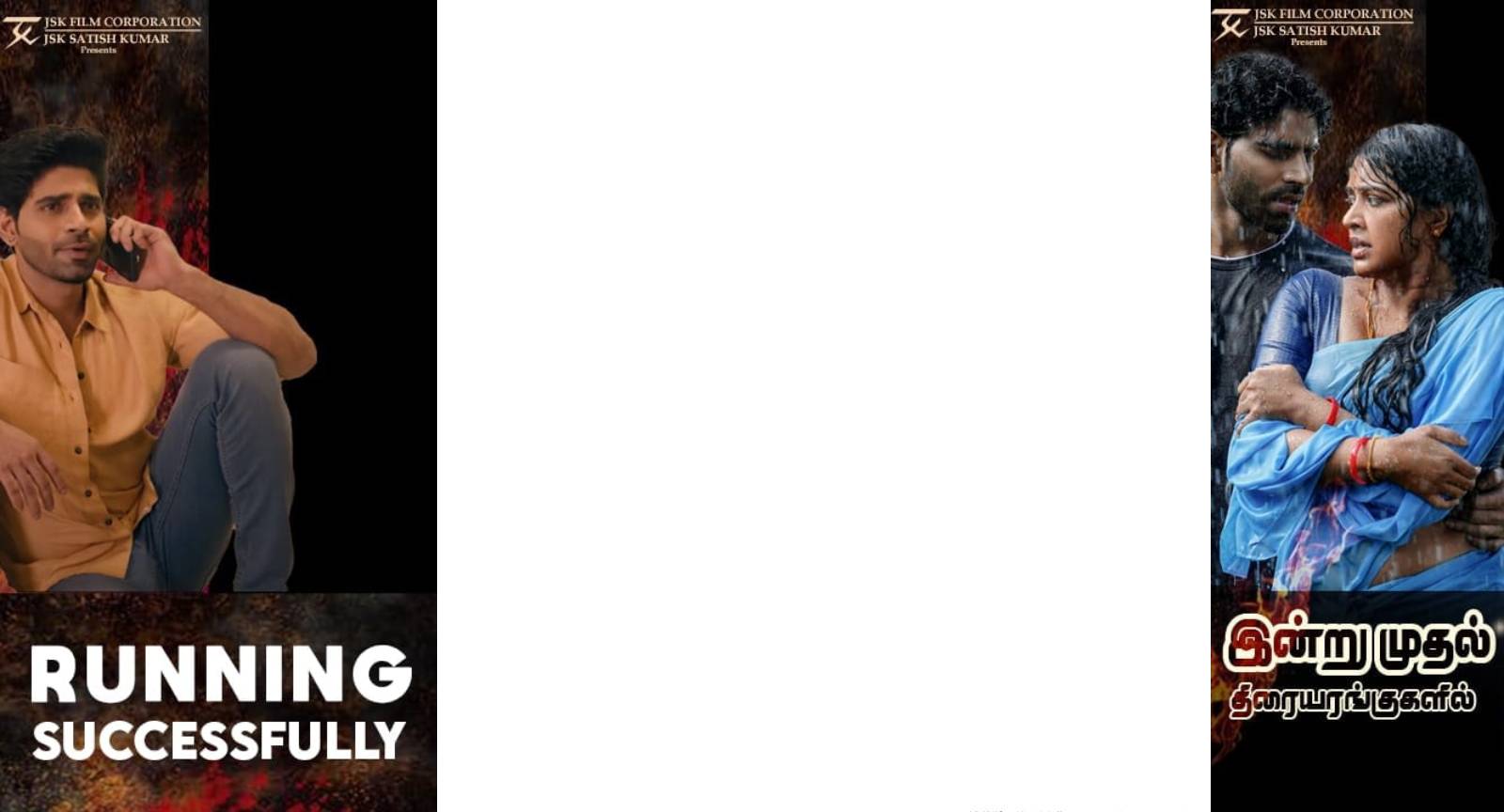Kauvery Hospital successfully performs double heart valve replacement and pacemaker
Kauvery Hospital successfully performs double heart valve replacement and pacemaker without surgery (Transcatheter) on an 82 year old man
This is first of its kind procedure performed in India in a Hybrid Cath Lab Operating Room
- A Valve in valve replacement is done when a previously implanted surgical valve is degenerated or re-narrowed over a period of time
- The procedure through a Transcatheter is a recent advancement, which has been approved for high risk patients initially.
- Hybrid Cath Lab Operating Room is the safest place to perform this high risk and complex procedure.
Chennai, 2nd June 2022: Kauvery Hospital Chennai, a unit of Kauvery Group of Hospitals, a leading multispeci alt y healthcare chain in Tamil Nadu, today announced the successful treatment of 82-year-old man with multi ple heart valve disease. The procedure which is a first of its kind in the country involved two ‘valve in valve’ re placement using a transcatheter and a pacemaker was also implanted through transcatheter in the same pro cedure to resolve slow heart rate.
Mr Balakrishnan, aged 82, from Coimbatore, suffered from multiple heart valve disease which included a severe aortic valve leak, mitral valve leak and moderately leaking tricuspid valve with severe pulmonary hypertension, (high pressure in the arteries of lungs and right side of heart). Also known as the “leaky valve disease”, the condi tion is where the heart valve does not close properly, causing leakage in the blood flow, pushing the heart to str ain further for effective pumping of the blood which would eventually lead to a heart failure or cardiac arrest.
Speaking on the condition, Dr. R. Anantharaman Senior Consultant Interventional Cardiologist, Kauvery hosp ital Chennai, said, “The man had a history of severe regurgitation (leak) of both mitral and aortic valve and the tricuspid valve which leaked moderately. In 2012, he went through a valve replacement surgery where the aortic valve was replaced with a 21 mm bioprosthetic valve, the mitral valve was replaced with a 31 mm bioprosthetic valve and the tricuspid valve was repaired. A bypass graft to the front of the left anterior descending artery was also performed on him. At this point, the functioning of his heart had significantly reduced and post-surgery, he was sustained on medical treatment.”
Fast forward to this year, he started to face difficulties in breathing and it worsened over a period of 4 to 6 mo nths, to an extent where he was unable to walk or lie flat on his back. “Our team examined his condition and his medical history, where the ECHO (Echocardiography) showed a re-narrowing in the aortic and mitral bio pro sthetic valves. Considering his age, reduced heart function and the previous surgery we could not afford a rep etition of same surgery, due to the high risks involved. After a thorough heart team discussion, we performed valve in valve replacement using a transcatheter (minimally invasive) for both the aortic and mitral valves, which appeared to be the ideal solution. Additionally, we also detected a conduction block in his heart which was re solved by a pacemaker, using transcatheter pacemaker (Micra)” adds Dr Anantharaman.
A transcatheter procedure for valve in valve replacement is recommended for those who had undergone open heart surgeries with tissue valve, which is failing now and the recovery period in this is faster when compared to a surgery. In this case, the individual was discharged on 3rd day post procedure and is doing fairly well.
Speaking on the success of the treatment, Dr. Aravindan Selvaraj, Co-Founder & Executive Director, Kauvery Ho spital, Chennai said, “The valve in valve replacement through a transcatheter has been adopted significantly in the west, and it is proved to be safer for high risk patients who had already undergone an open heart surgery. Ho wever transcatheter procedures do come with a lot of other risks and complications, which can be handled only by an expert team and the right infrastructure. The procedure was performed in the safest place, which is the Hy brid Cath lab Operating Room under the expertise of the cardiologist and his skilled team. I would like to appr eciate our interventional cardiologist, Dr. Anantharaman and team for their remarkable efforts to improve the quality of life.”
